15 Little Known Facts About Australia
Australia is a vast and intricate nation. During the years it has proved to
be a popular tourist destination. This is due to the numerous attractions that
the country has to offer. The most popular sights to see in include the Sydney
Opera House, the Blue Mountains and Ayers Rock. There so many landmarks well
worth visiting throughout Australia. There are also a number of unusual, little
known (or unknown) facts about this distinct country that many would be
surprised to learn about.
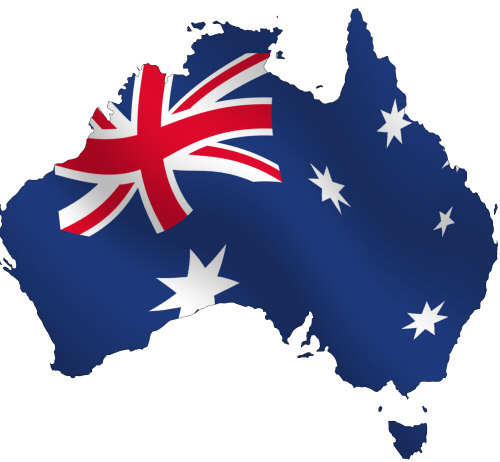
15) Australia Has Over 150 Big Things
There appears to be an unwritten rule in Australia that when a small town out
in the middle of nowhere wants attention, they should build something big to
catch people’s eye. There are more than 150 “big things” located throughout
Australia. They include a variety of structures and sculptures.
The very first big thing built in the country was the Big Scotsman. It was
erected outside of the city of Adelaide, in the state of South Australia, in
1963. Since then, many other big things have followed.
Big Scotsman or "Scotty" on Scotty's Corner Medindie,
Adelaide, Australia:
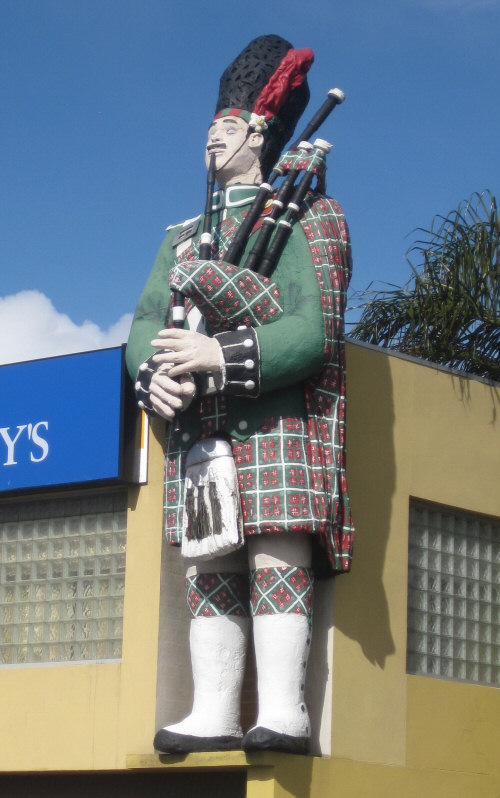
Some of the most notable big attractions are: the Big Beer Can, the Big Blue
Heeler, the Giant Apple, the Big Gold Pick and Pan, and the Big Bench. Typically,
most big things stand right along various roads and serve as backdrops for group
photos along road trips.
Big Beer Can - Cobar, Australia Above the Grand Hotel:
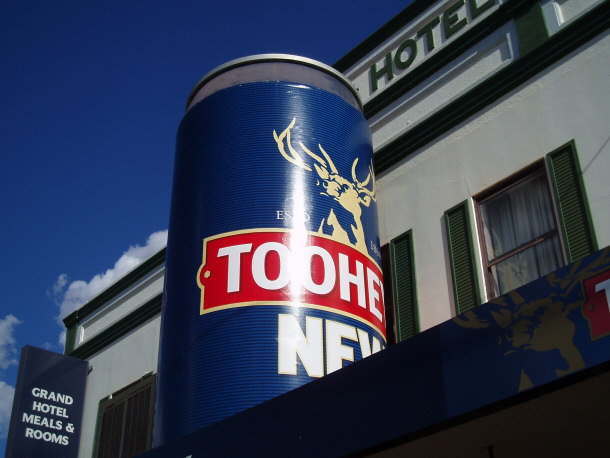
By Amanda Slater
via Wikimedia Commons
Big Blue Heeler - Muswellbrook, Australia:
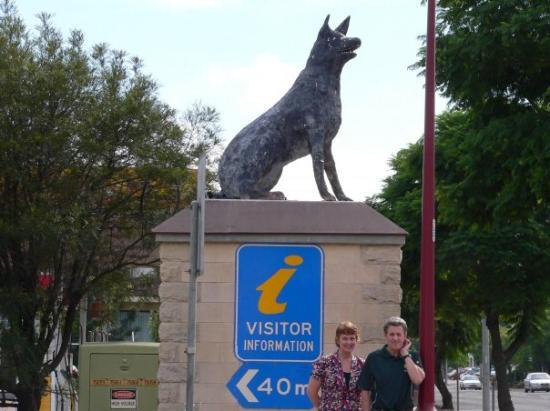
The various big things initially began as an obvious attempt at attracting
tourism to little known (and often out of the way) towns. Nowadays, the sheer
number of the big things has led to a cult phenomenon for people who love to
travel, going to each and every big thing they can possibly find.
Giant Apple - Batlow, Australia:
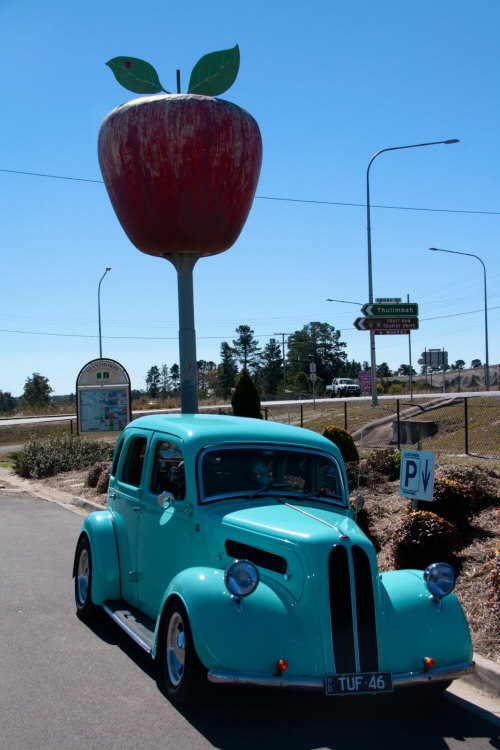
Despite the gimmicky origins of most of Australia’s the big things, many of
them have become so iconic that a surprisingly large number of the structures
are considered to be folk art. Some have even been heritage listed.
Big Gold Pick and Pan - Grenfell, Australia:
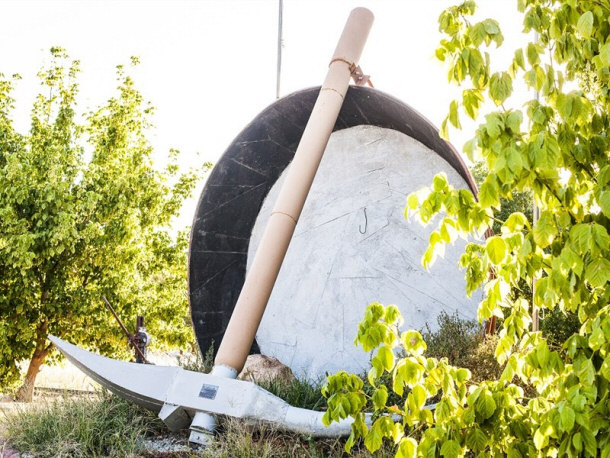
Big Bench - Broken Hill, Australia:
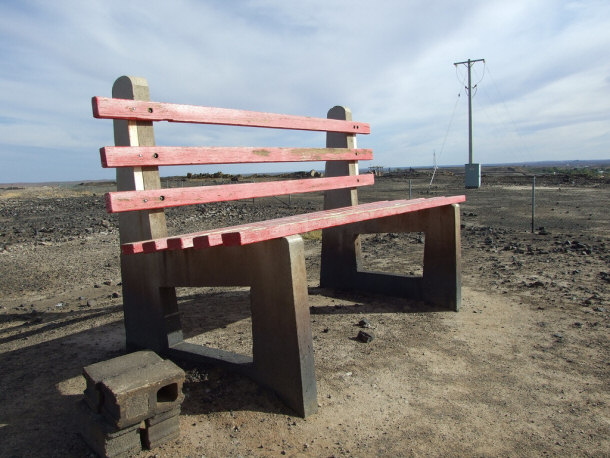
14) In Australia Women in Bikinis Will Pay for Parking
In 1964, Bernie Elsey came up with a curious, but brilliant business
promotion idea. He wanted to encourage shopping in the city of Surfers Paradise
in the state of Queensland. The main thing that kept people away from the city
was the recently installed parking meters. With this in mind, Elsey decided that
he would introduce Surfers Paradise to his own brand of meter maids.
The meter maids are young women, dressed only in gold bikinis and tiaras.
They wander the streets of the city and their mission is to add money to
expiring parking meters. There were some initial issues with the legality of the
promotion, though city authorities soon realized that the benefits of the unique
city promotion out-weighted any laws that may have been broken by it.
Meter "Model" Maids in Surfers Paradise:
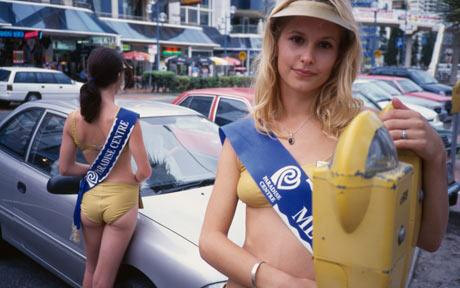
The meter maids became so successful that the area soon gained international
attention. Large numbers of tourists were drawn there, and the city now enjoys
an international profile, thanks in part to the Surfers Paradise meter maids.
13) Meteorologist Had to Add a New Color to Heat Maps
Australia is known for having quite high temperatures. This year, the
nation’s temperatures reached an all-time high. They were so high, in fact, that
the Australian Bureau of Meteorology was forced to add two new colors to the
nation’s heat map. The colors were pink and deep purple.
Previously, the temperature range on Australian heat maps had gone up to 50
degrees Celsius (122F). This was because the all time highest temperature
recorded was 50.7 degrees. This was reached on January 2, 1960. The temperature
ranges had been considered adequate until the beginning of 2013.
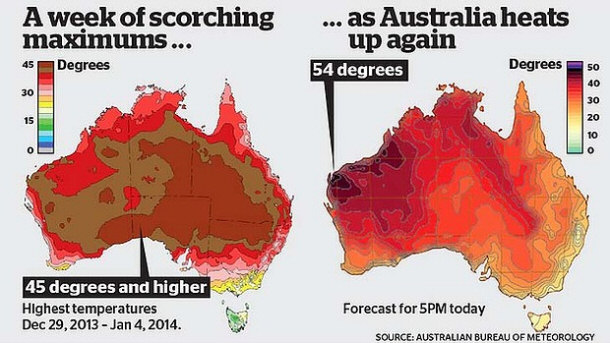
Australia’s heat maps now go up to 54 degrees Celsius (129.2 F). This came
about after the first six days of 2013 reached some of the highest temperatures
ever recorded. Temperatures had an average of 40.33 degrees Celsius, while some
days they almost hit the high of 50.7 degrees Celsius. It’s seems inevitable
that the record will soon be broken, thus the need for the new colors on the
heat map.
12) Most Coober Pedy Residents Live Underground
The town of Coober Pedy, South Australia, is considered to be the opal
capital of the world. It is located in the middle of nowhere. The town exists
purely because of the opal industry. They have been mining high-quality opals
since the early 1900s.
Australian Siberian Church Built Within the Desert
Interior:
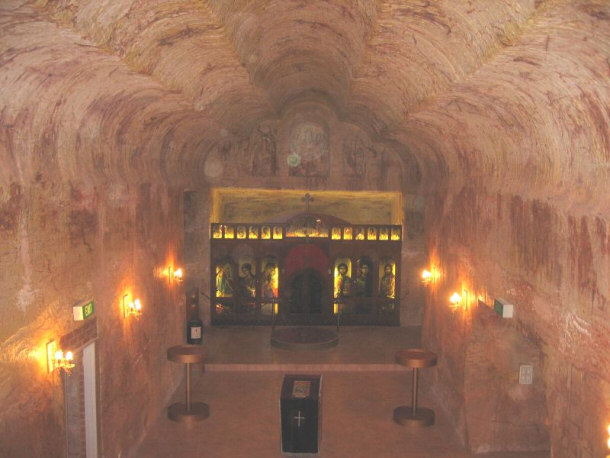
By Percita Dittmar
via Wikimedia Commons
Given Cooper Pedy’s long history of mining, there are still a number of old
mines that run beneath the town. They aren’t abandoned once they are mined out;
rather, they are often put to good use.
Inside an Underground Jewelry Shop in Coober Pedy:
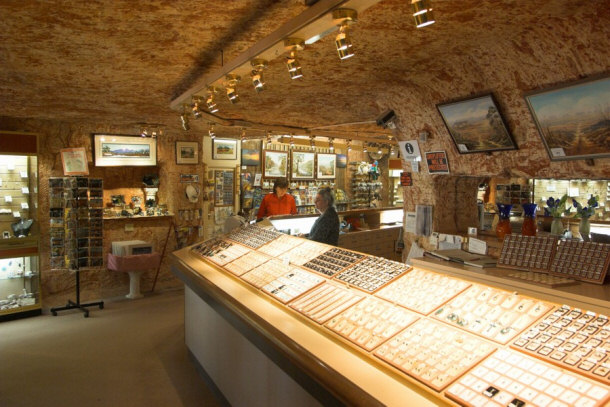
By Lodo27
via Wikimedia Commons
The area where Coober Pedy is located is notoriously hot. Sometimes the heat
is so bad that it is unbearable, especially during summer. Because of the
scorching temperatures during the season, the majority of the town’s citizens
will spend their time in the old mines that have been converted into living
quarters.
Coober Pedy:
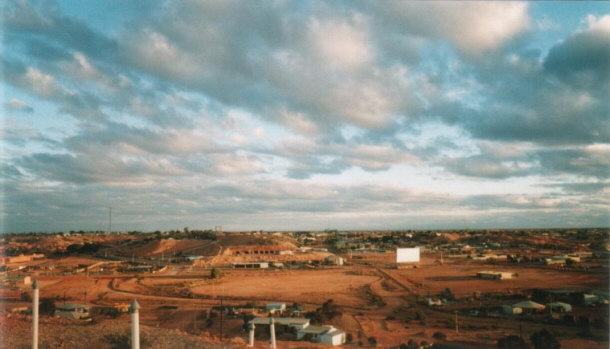
By lgiwalam
via Wikimedia Commons
11) Australia is Infested With Rabbits
Back in the 1800s; just 24 individual rabbits were introduced to Australia.
Their purpose was purely for the sake of providing the settlers with something
to hunt for sport and to provide food. It’s believed that the man responsible
was Thomas Austin. He brought the animals from England with the intention of
keeping them on or near his property. However, over the course of 60 years, the
24 original rabbits bred. Their population increased to around 400 million.
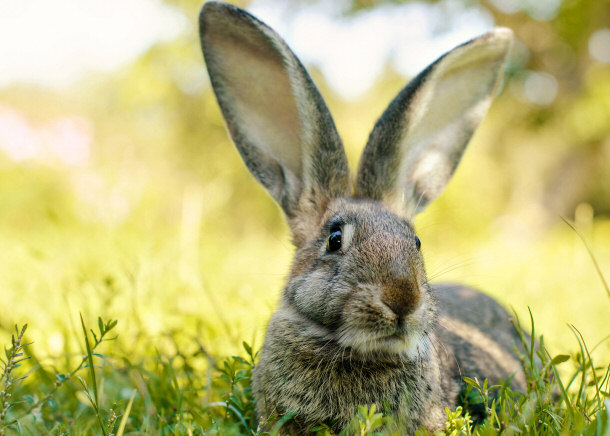
Ultimately, the rabbits reproduced so quickly that after 10 years of being
introduced, the animals were being killed at a rate of around 2 million per
year. Still, these numbers made practically no impact on their population. This
was the quickest any mammal had spread in recorded history.
Rabbits Around a Waterhole on Wardang Island in 1938:
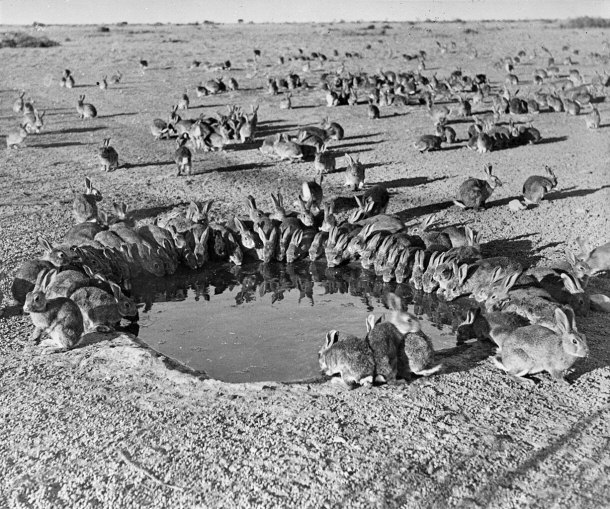
Rabbits remain a huge problem for the country, especially for the wilderness
and wildlife. The non-native animals destroy native planets, crops and
significantly erode the topsoil. Over the years, Australian farmers and
authorities have had to resort to poisons and even using ferrets to address the
issue of the rabbit population. But this has been to no avail. The only upside
to the history of the rabbits is that their extreme population provided
easily-accessible food during the Great Depression.
10) Australia’s Christmas Island Has Bridges for Crabs
There is a special species of crab that is found on the Australian territory
of Christmas Island. Every year, at the beginning of the wet season, around 50
million crabs migrate across the island. The crabs travel from the island’s
rainforest all the way to the sea.
While human development on the Christmas Island is fairly limited, it still
provides significant hazards for the special crabs. The animals have to navigate
on man-made roads and other structures during the mating season. Historically,
these hazards have resulted in a huge death toll for the creatures.
It was too difficult to simply close the roads for the migrating crabs.
Authorities of the island addressed the problem by developing special bridges
that enable the crabs to bypass a number of human hazards that impact on their
migration. The crabs have always proven to be a big tourist attraction over the
years. The implementation of the bridges makes the experience safer for the
crabs involved and the human spectators.
Crab Bridges Create Safe Migration Routes for Christmas
Island Red Crabs:
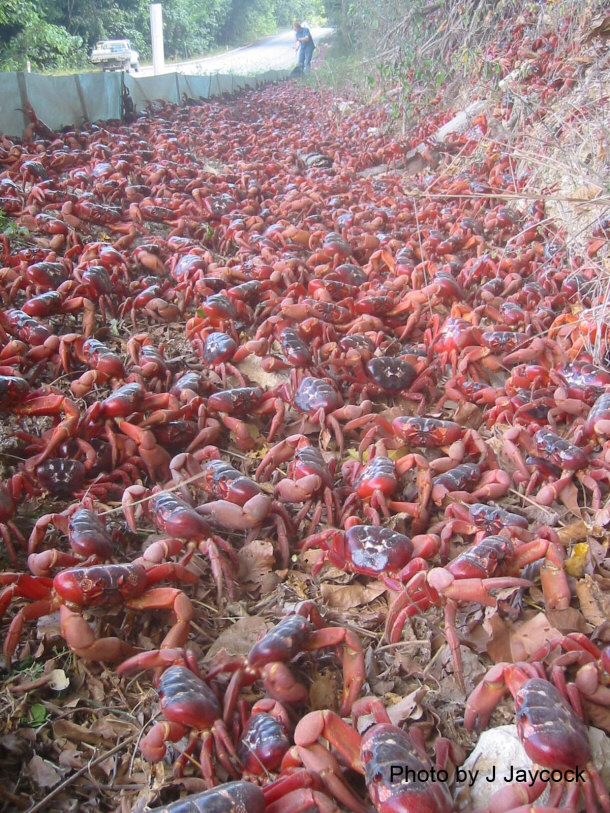
Christmas Island is also home to the Christmas Island Immigration Reception
and Processing Centre which is nicely isolated out in the Indian Ocean. It is
used for temporary facilities for asylum seekers who are typically detained
after trying to travel to Australia by boat.
Christmas Island Immigration Reception and Processing
Centre:
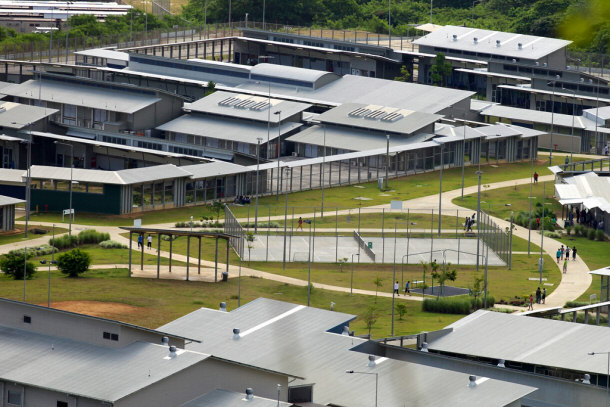
9) Australia Has the World’s Largest Population of Camels
Animals commonly associated with Australia are kangaroos, koalas or
crocodiles, which are almost everywhere throughout the country. Perhaps the
least likely animal to be found in large numbers is camels. In fact, Australia
has the biggest population of camels in the world.
Australian Feral Camel:
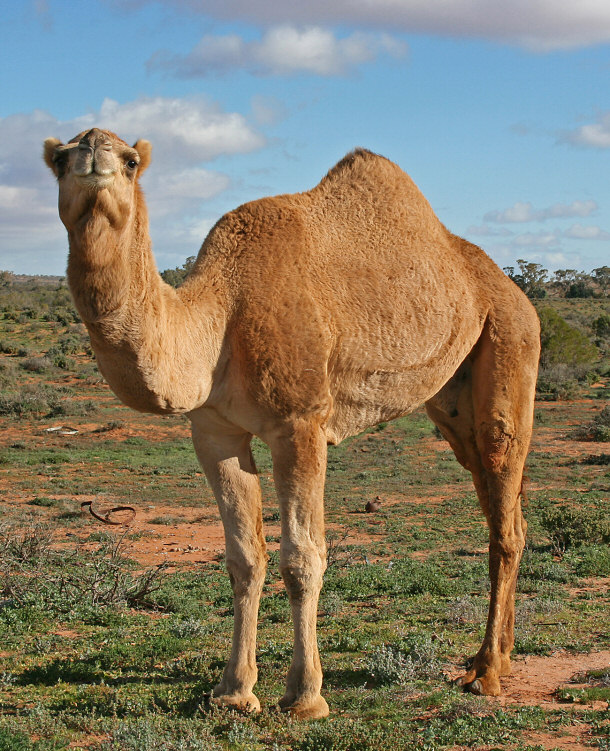
By Jjron
via Wikimedia Commons
There are over 1 million wild camels throughout western Australia. Two main
types of camels are the Bactrian and Dromedaries breeds. The camel isn’t
indigenous. Their numbers simply increased rapidly during the 1800s, after the
animals were brought over to the country as part of the colonization. The camel
proved to be very valuable in terms of travel and even the construction of
infrastructure. Thus, they were widely used throughout central and western
Australia during the era.
Distribution of the Australian Camel Population:
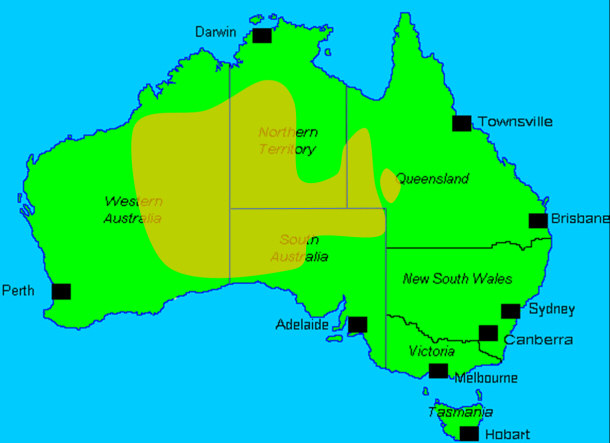
By Dr-Victor-von-Doom
via Wikimedia Commons
The camels became less valuable in the 1900s when motorized means of
transport were widely introduced. As a result, many of them were released into
the wild.
Ironically, while they were originally utilized to develop infrastructure,
the numbers and destructive habits of the feral camels are taking a toll on the
very thing they once helped develop. They are commonly known to destroy water
pumps, taps and even public toilets while in search of water in areas that are
notoriously hot and frequently going through droughts.
8) Australia Has a Stone Arrangement Older than Stonehenge
Stonehenge and the Egyptian Pyramids are well known ancient ruins that are
testaments to inventiveness of ancient societies. One similar unheard of
monument is in Australia. It’s called the Wurdi Youang and is located in the
state of Victoria.
The formation is made up of a special arrangement that consists of 100 basalt
stones. Together the stones form an egg shape display. Each individual stone
ranges between 2 to 4 feet in height. The entire piece is around 165 feet wide.
There are three large stones that appear to mimic three mountains in the
background.
A Few of the Remaining Stones of Wurdi Youang:
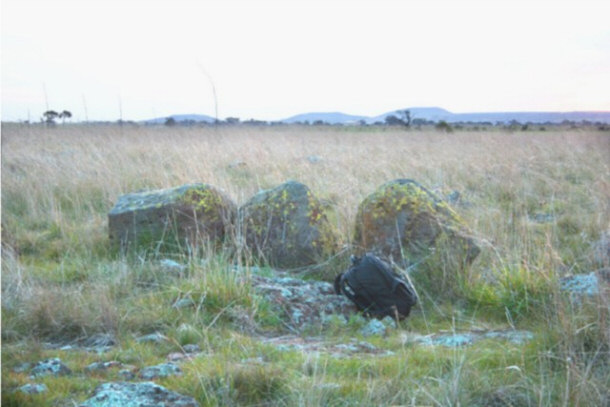
By Ray Norris
via Wikimedia Commons
Although no one knows for certain, many researchers suspect that Wurdi Youang
was developed for astronomical purposes. The traditional indigenous owners of
the arrangement are the Wathaurung Aboriginal Community. The Wathaurung people
have lived in the area for 25,000 years. It is believed that the stone circle is
significantly older than the famous Egyptian Pyramids and Stonehenge.
Astrological Positioning of the Stones of Wurdi Youang:
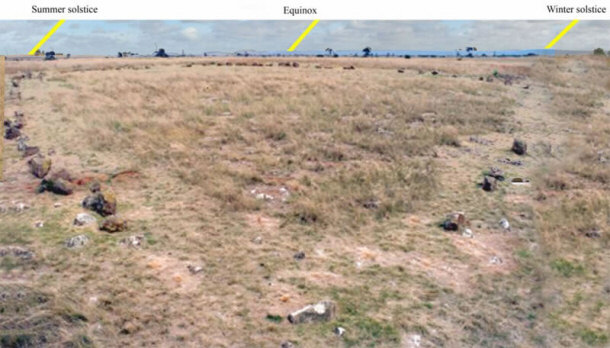
The meaning behind the arrangement may never be known. Following the British
colonization of the country, significant portions of the Wathaurung people’s
customs were lost. Thus, the means behind the community’s traditional practices
were lost. The exact location of the site is not publicly known. This is out of
respect for the wishes of the Wathaurung people. They wish to preserve the
arrangement from any damage that may be caused by tourist traffic.
7) Australia Has a Country and a King Within Its Borders
In 1970, Leonard Casley made the decision to secede from Australia when the
nation’s government left him with no other option. The government had introduced
a grain quota, which would have inevitably ruined Casley financially. Thus,
Casley established his own country.
Hutt River Principality:
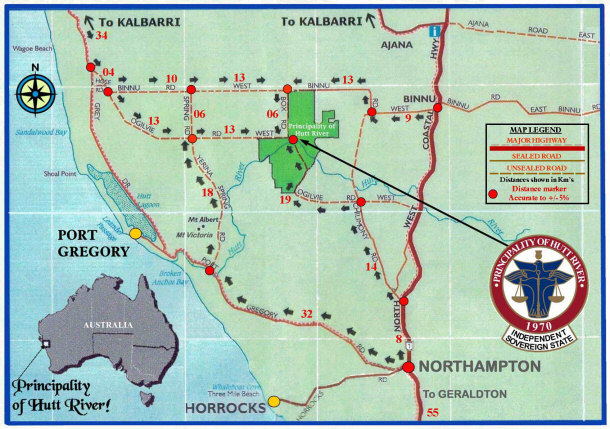
Casley gave himself the title of Prince Leonard of Hutt and served as the
king of his 18,500-acre farm. Originally known as Hutt River Province, Casley's
kingdom is now officially known as the Principality of Hutt River. It is located
in western Australia.
The principality legally achieved the status of being an independent
sovereign state in 1972. It isn’t officially recognized by the Australian
government or other nations, though. It has its own constitution and special
currency. Officially, there are around 30,000 citizens of the nation, though
only Casley’s immediate family actually resides on the land.
Casley and His Kingdom:
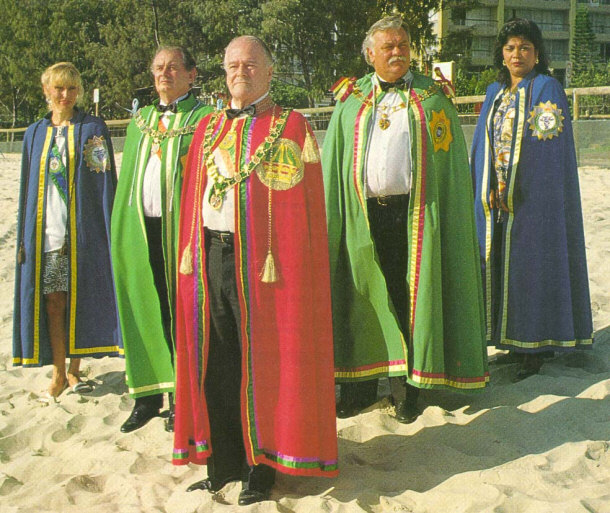
Casley’s kingdom has come to be a major regional tourist attraction in the
western part of the country. His micro-nation isn’t the only one to be found in
Australia. Since news spread of Casley and his establishment of the Principality
of Hutt River, almost 30 more micro-nations have come to life during the years.
Furthermore, Casley has come to be regarded as the founding father of the
micro-secession movement. Dozens of micro-nations around the world have been
established after people were inspired by Casley’s success.
6) Australia Has a Fire That Has Been Burning for 6,000 Years
Mount Wingen is a hill in the Burning Mountain Nature Reserve in the state of
New South Wales. It is better known by its nickname of “Burning Mountain.” The
name comes from the hill that appears to constantly burn. This is due to the
fact that smoke has always emanated from the location.
Although settlers originally assumed that the smoke was related to volcanic
activity, it is in fact the result of coal deposits that lie under the
sandstone. Experts estimate that it has been burning for approximately 6,000
years. It is the oldest known coal fire in the world.
Burning Mountain - New South Wales, Australia:
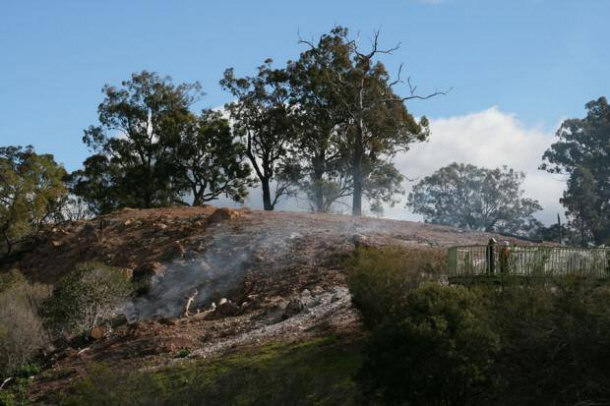
Actually, the fire that burns under the surface of the ground is gradually
moving in a southern direction at a rate of around three-feet per year.
Nevertheless, the area is perfectly safe for the tourists who visit the area
every year to see the curious phenomenon.
5) The Great Barrier Reef is the Largest Living Thing on the Planet
Most non-Australians would have heard of the Great Barrier Reef in the state
of Queensland. It is the largest coral reef system in the world. What most
people might not realize is that the famous and iconic reef is actually the
biggest living surface on this planet.
Aerial View of Great Barrier Reef:

By Sarah_Ackerman
via Wikimedia Commons
The Great Barrier Reef is approximately 1800 miles in length. It is made up
of the largest collection of coral on Earth. It consists of 400 different
varieties of salt water coral.
The Great Barrier Reef Offers the Most Vast Collection of
Marine Life on the Planet:
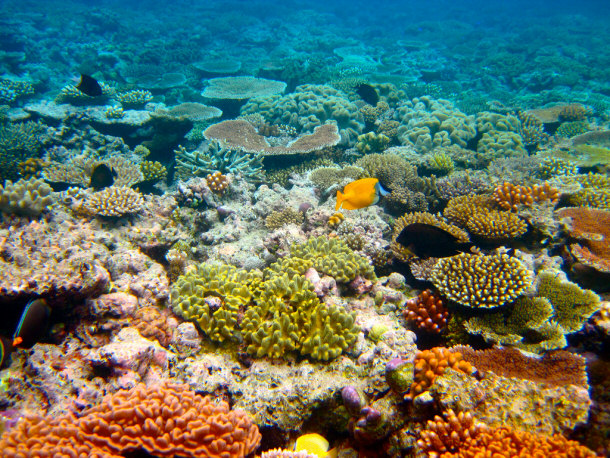
Furthermore, the reef is the habitat of a large
number of ocean creatures such as: sponges, crustaceans, dolphins, mollusks, sea
turtles, rays, and around 1,500 different species of tropical fish.
Snorkeling in the Great Barrier Reef:
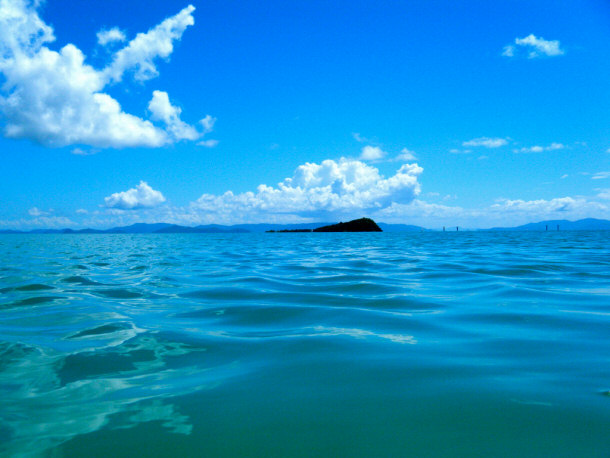
Of the
varied species in the reef, the most significant are the endangered green sea
turtle and the dugong. This wonderful area is even home to giant clams that are
over 120 years old!
Green Sea Turtle:

By The Lightworks
via Wikimedia Commons
4) Australia Has Rainforests
Australia is well known by foreigners for the heat and its deserts. What many
might not know about the country is that, despite the heat, there are actually
quite a few rainforests located throughout the country. In fact, they are World
Heritage-listed rainforests.
Daintree Rainforest - Queensland, Australia:
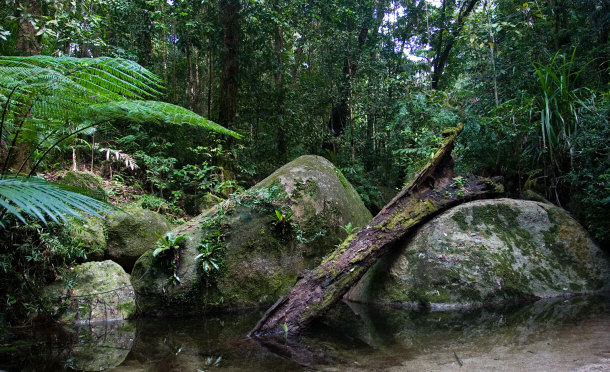
By Diliff
via Wikimedia Commons
With the exception of the Australian Capital Territory and southern
Australia, there is at least one rainforest in each state in the country. The
rainforests are very climatic and they are some of the oldest locations in the
world.
Godwana Rainforests of New South Whales, Australia:
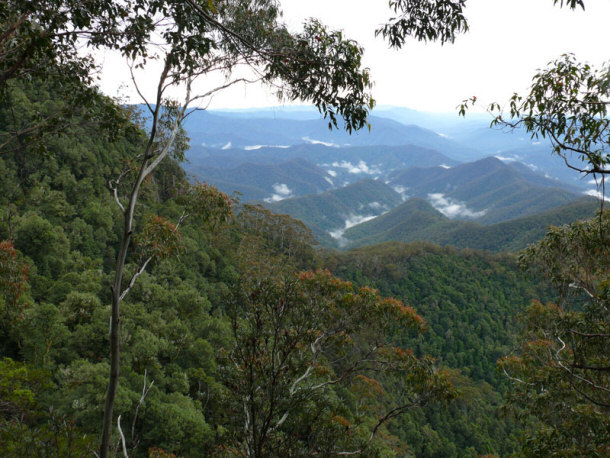
Rainforests of note include, but are not limited to: the tropical swathe that
is the Daintree Rainforest in Queensland; the wilderness that makes up the state
of Tasmania; and the Gondwana Rainforests of New South Wales; the dry
rainforests of the Kimberley region in western Australia; the monsoon rainforest
found in Kakadu National Park; and the fern gullies of the Dandenong Rangers and
Otway Ranges in Victoria.
3) Australia Has a Pink Lake
Lake Hillier is located on Middle Island, which is the biggest island that
makes up Recherche Archipelago in western Australia. Lake Hillier is like most
other lakes in terms of shape and depth; however, its color is significantly
different from others throughout the world. The lake is naturally bright
bubble-gum-pink colored!
Tourist Floating on Lake Hillier:
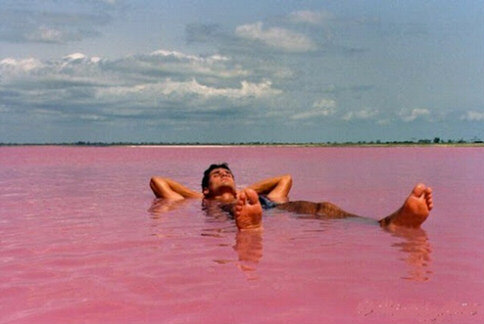
Scientists have no idea why. For years, researchers have attempted to figure
out how and why the lake is pink. They have even tried to alter the Lake
Hillier's
color, but to no avail. The most likely explanation for the lake’s color is that
the water is made up of a combination of baking soda, sodium bicarbonate and sea
salt from the Southern Ocean, which is just a short distance away.
Middle Island and Lake Hillier:
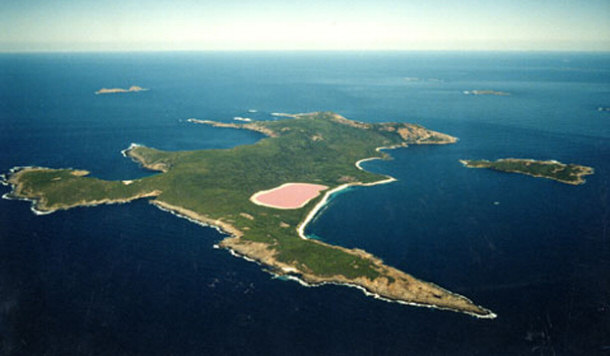
Alternatively, the strange coloring might be the result of red halophytic
bacteria found in salt crusts. Although the water resembles the bright pink
color from above, it merely appears to have a slight pink hue in it from the
shoreline. Despite appearances, the water is considered safe to swim in and Lake
Hillier continues to me a major Australian tourism attraction.
2) Jedi is a Religion in Australia
Star Wars fans are everywhere. The science fiction series is a cultural
phenomenon that leaves few countries in the world untouched by its fame. And as
we all know, Star Wars fans come in all varieties and some are truly hardcore –
but more so in Australia than anywhere else. The cult following in the country
is so big that they officially have more than 70,000 people who identify their
religious beliefs as “Jedi,” which is the spiritual principle that the Star Wars
series revolves around.
This fact was revealed in 2002 after Australia’s Census was released. Exactly
70,509 individuals claimed Jedi as their religion of choice. Australia was the
location where two of the series’ films were produced – ‘Attack of the Clones’
(2002), and ‘Revenge of the Sith’ (2005). This might explain the popularity.
Another explanation for the surprisingly high number of Jedi believers could
have to do with an email that had circulated shortly before the Census date. The
email encouraged people to write Jedi up as their religious beliefs. It was
believed that it would be officially recognized as a religion if more than
10,000 listed it.
Members of the Jedi Religion Practicing Their Faith:
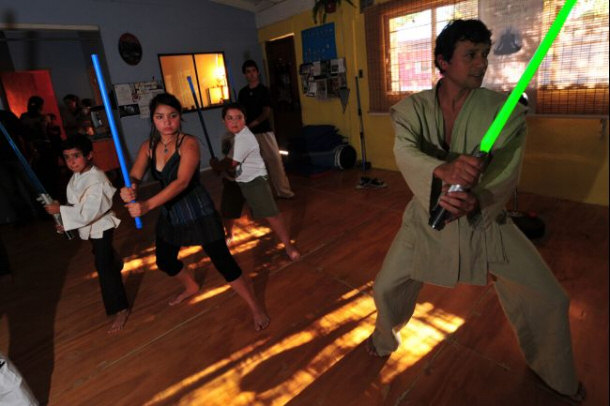
According to Chris Brennan, president of the Australian Star Wars
Appreciation Society, most of the people probably just listed Jedi as a joke. He
also speculated that most likely 5,000 people were hardcore Star Wars fans who
honestly followed the beliefs religiously. 15,000 people probably listed Jedi as
a way of messing with the government, while 50,000 people probably just did it
as a joke.
Despite the popularity of Jedi, the Australian Bureau of Statistics refused
to recognize Jedi, or alternatively “the force,” as a religion. Instead, those
who listed Jedi or the force were officially written as having their religion
"not defined." Nevertheless, when the UK and New Zealand did their Census’
shortly after Australia, they made the point to have “Jedi Knight” as a
religious option.
1) Australia Has a Shark-Infested Golf Course
Without a doubt, Australia has some remarkable tourist attractions, both
natural and man made. Arguably the weirdest (and possibly the coolest) is the
Carbrook Golf Club. As the result of a flood, there are live bull sharks
inhabiting the lakes throughout the course.
Local Hazards at Carbrook Golf Club - How Many Penalty
Strokes for Sharks?:
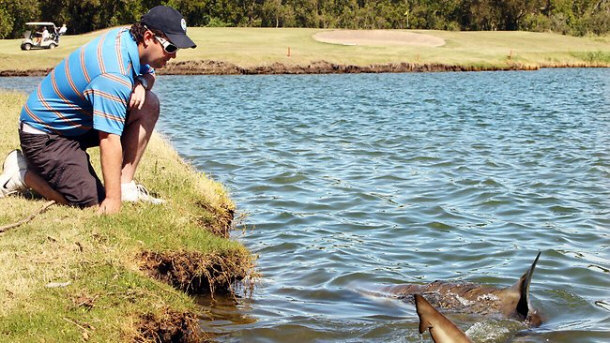
Bull sharks can live in both fresh water and sea water. Six bull sharks were
displaced after the rising flood waters ultimately found a home in the course’s
lakes. The sharks have since bred and significantly increased in population.
Carbrook employees now feed and care for the animals.
One of Carbrook's Local Residents:
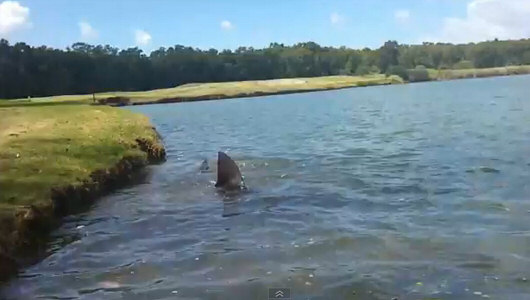
Beyond the tourism, there is an upside to the situation - the bull sharks
also inadvertently serve as ambassadors for their species. Many types of sharks
are often victims of hunting in the wild. This is typically done out of a
misguided fear of the species or, worse, purely for their fins. The sharks at
the Carbrook Golf Course enable people to get up close to the creatures in an
unusual manner. This allows people to appreciate them in a way that has never
been done before.
Conclusion
Like every country, there is far more to experience than most people realize.
There are far more things to see and learn about Australia than what the
mainstream media focuses on. The lesser known attractions are often the best so
see, while the little known facts about the country, are by far, the most
interesting.
Culture
Top 15 Countries With the Strongest Military
15 Amazing Architectural Style Types From Old to Modern
Top 15 Countries with the Shortest Life Expectancy
Top 15 Countries with the Best Economy
Top 15 Things You Didn't Know about Chinese Culture
Top 15 Countries with the Longest Life Expectancy
Top 15 Most Spoken Languages Around the World
15 Unique Aspects of Mexican Culture
15 Unique Aspects of German Culture
15 Unique Aspects of French Culture
15 Unique Aspects of American Culture
15 Unique Aspects of Japanese Culture
15 Ways Americans are Different than Canadians
15 Little Known Facts About Australia
10 of China's Ghost Cities Explained
20 Little Known Religions and Cults
Preparation for the 3rd Temple in Jerusalem and End Time Prophecy
Top 15 Modern Day Pirates
15 Most Protected Areas in the World
|